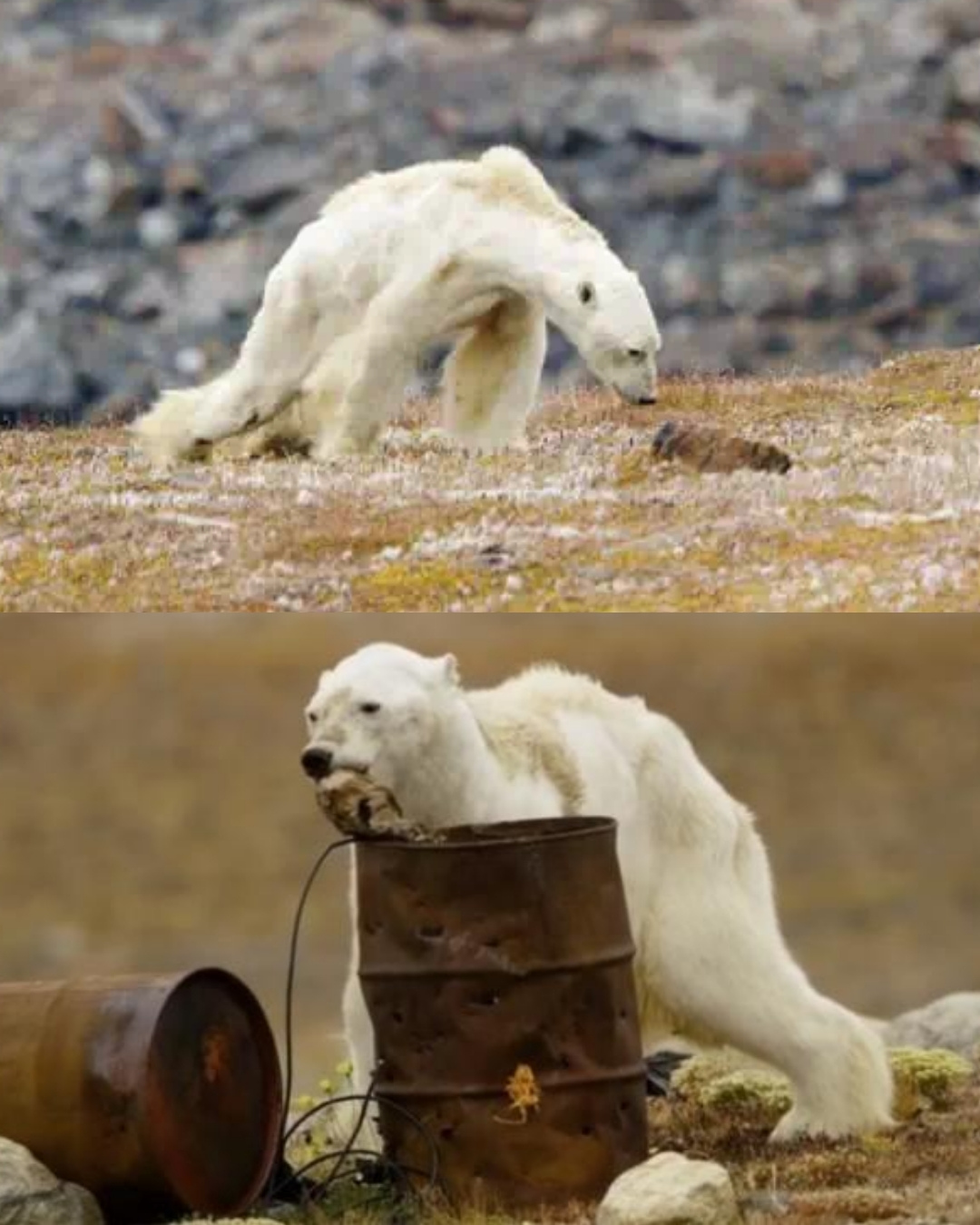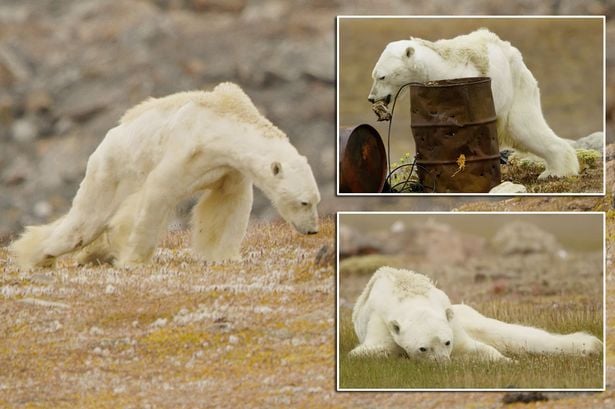It’s one of the most painful video clips you will ever see. A Starving Polar Bear, once a majestic, 1,000-pound king of the Arctic, is reduced to a walking skeleton. Its white fur hangs loosely over a bony frame as it drags its back legs, too weak from muscle loss to even walk properly. This haunting footage, captured by National Geographic photographer Paul Nicklen on Canada’s Baffin Island, became one of the most powerful stories ever told about our planet, forcing the world to see the real, agonizing face of climate change and its impact on the life of these incredible animals.
A Ghost in the North
When Paul Nicklen and his conservation group, Sea Legacy, first spotted the bear, he thought it was just an old white blanket caught on the rocks. But then the “blanket” moved. It was a bear, but not as anyone had ever seen one. Nicklen, who grew up in the Arctic and has photographed polar bears for years, was heartbroken. “When you see something like that, it breaks something inside you,” he said.
His team filmed, their eyes filled with tears. The bear moved with agonizing slowness, its body ravaged by a long, slow starvation. Every step was a painful effort. It stumbled over to a rusty garbage bin left by local fishermen, its instincts still screaming for food. It pawed weakly at the can, finding nothing. It was a devastating moment: a powerful apex predator, reduced to a desperate scavenger, dying a slow death on land because the ice it depended on was gone.

“This is What Climate Change Looks Like”
Nicklen posted the footage to Instagram with a simple, powerful caption: “This is what starvation looks like… This is what climate change looks like.” The video exploded. Millions of people watched, shared, and wept. For many, the abstract idea of “melting ice caps” suddenly became real. It was no longer a graph; it was a living creature in its death throes.
Read More: The Hidden Meaning Behind Princess Diana’s Cannes Gown: A Heartfelt Farewell to Grace Kelly
The image tells a brutal and simple truth. Polar bears are marine animals. They need sea ice to live. The ice is their hunting platform, where they wait to catch seals, their main food source. As the climate warms, the Arctic ice melts earlier in the spring and refreezes later in the winter. This traps the bears on land for longer and longer periods, away from their food source. Unlike grizzly bears, polar bears cannot survive on berries or plants. They are built for a high-fat diet. Without ice, they starve.

A Warning to the World
Some critics pointed out that this single bear could have been old, sick, or injured, and not proven to be a victim of climate change. But Nicklen was clear: this bear’s specific medical history wasn’t the point. This Starving Polar Bear was a symbol. It was a window into the future, showing exactly what this slow starvation looks like.
Scientists estimate there are only about 26,000 polar bears left in the world, and that number could drop by 30% by 2050. The life of this entire species is at risk.
The image of this bear still haunts the internet, and for good reason. It’s one of the most important stories of our time. It’s a warning, a cry for help from one of the planet’s most powerful animals. It forces us to confront a hard question: if we are willing to watch the King of the Arctic die like this, what does that say about us?
Full Story: Man Loses 360 Pounds Naturally, Internet Rallies to Support His Next Step



